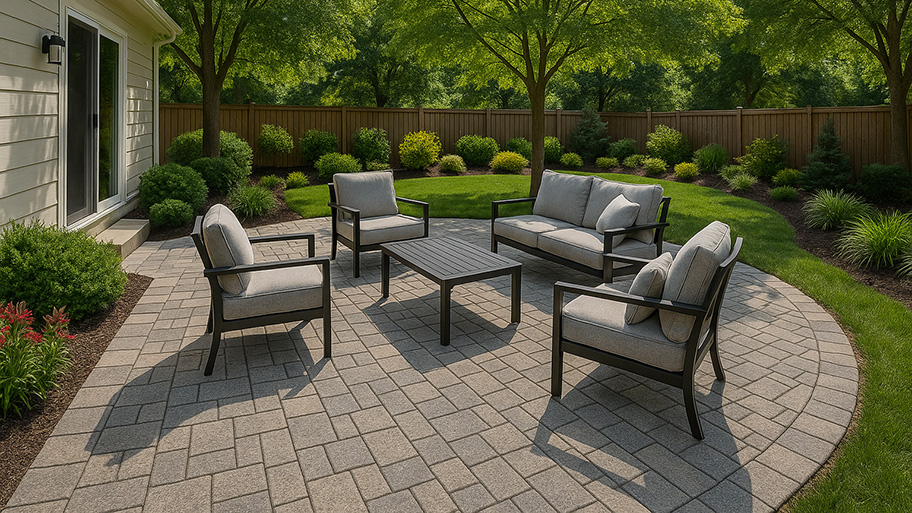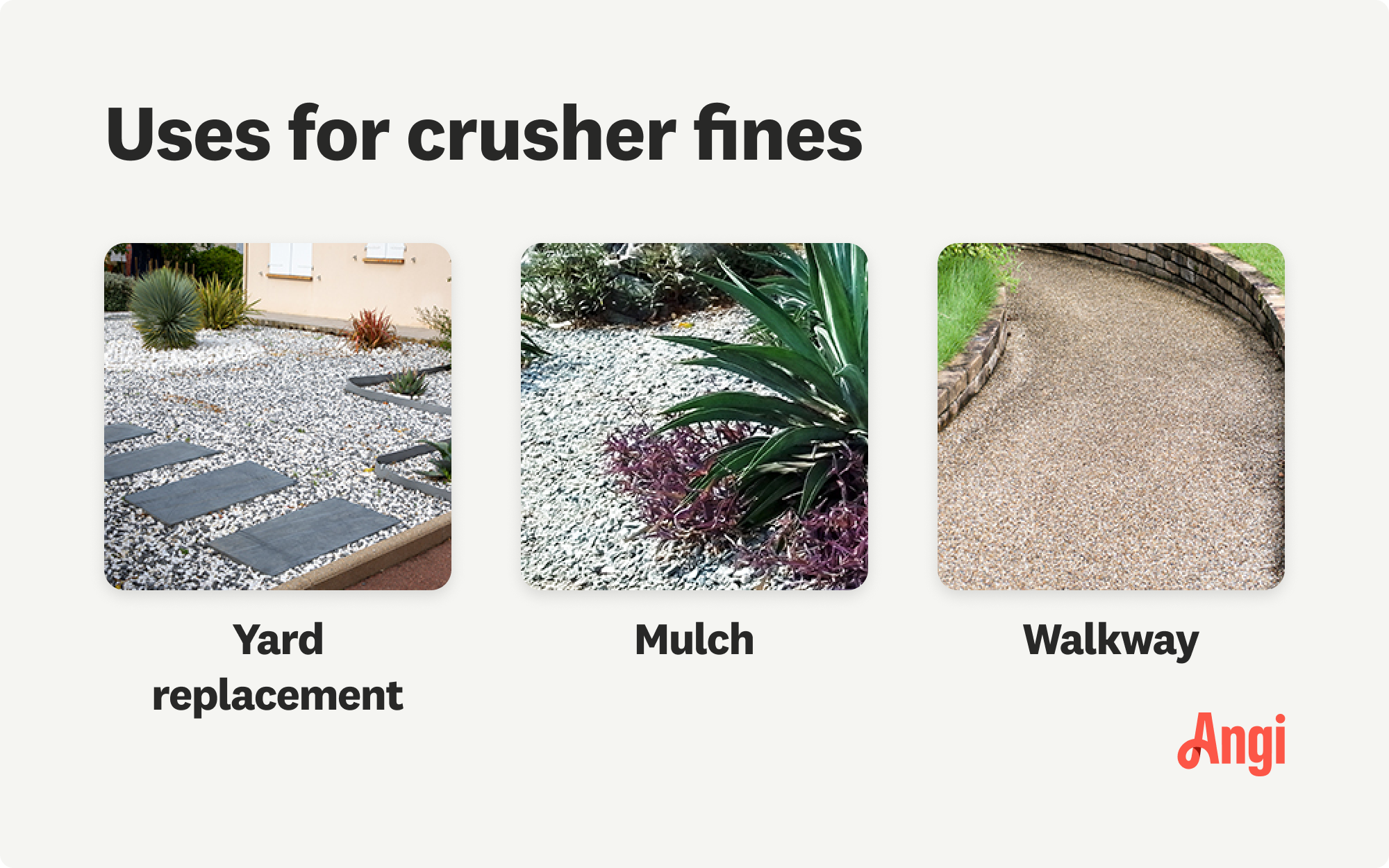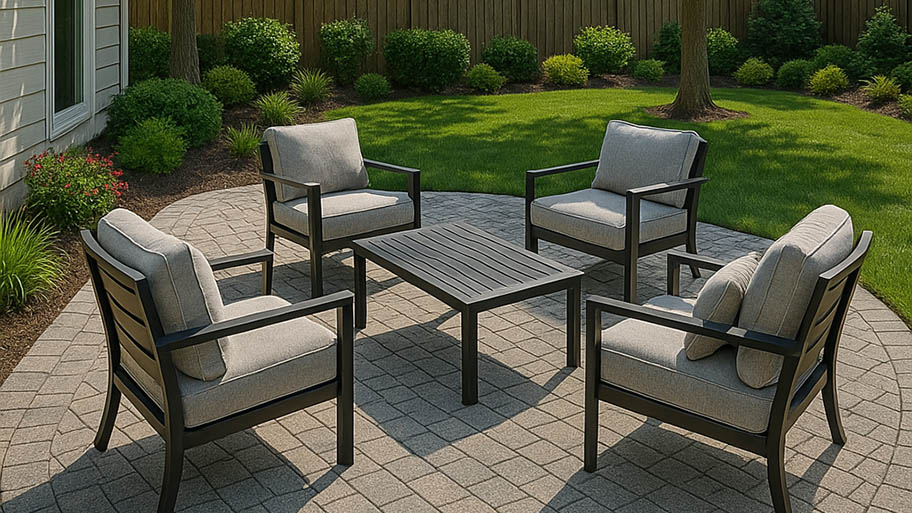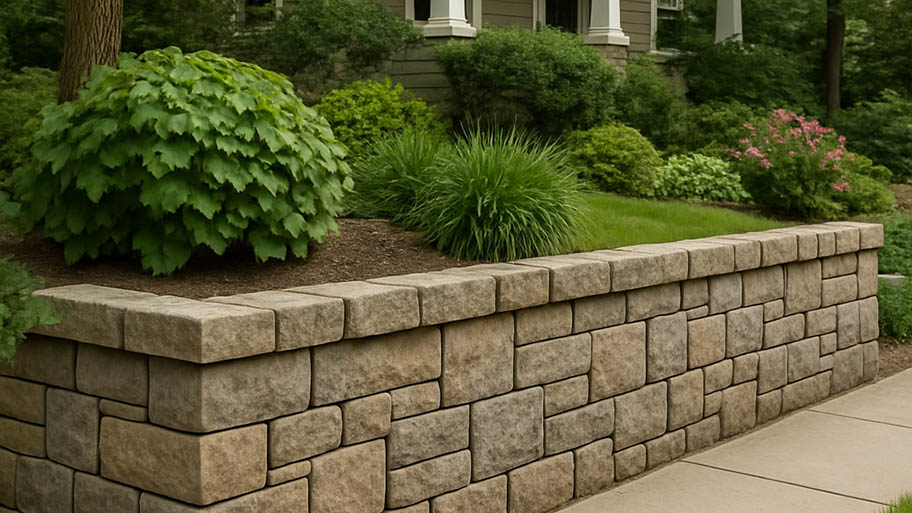
Thinking about installing concrete or brick pavers for a walkway or patio? Learn the cost of interlocking pavers in this informational guide.
Get your neighbors crushing on your fine organic landscape


Crusher fines are small particles of hard rock quarry.
You can use them as a surface cover for paths, driveways, lawns, and patios.
Crusher fines resist weeds, drain well, and cost less than alternatives.
“Crusher fines” may sound like a fee levied on a demolition derby truck driver or the name of a killer metal band, but they’re actually small particles of rock used for landscaping. Depending on where you live, you may hear it called decomposed granite, rock dust, breeze, or chat, but these are all different names for a product that serves the same purpose and functions the same way.
You’ve likely seen crusher fines on rural roads and hiking paths, but you can also use them in your home landscape—not only on walkways but also as a lawn replacement or an alternative to gravel driveways. Read on to learn what crusher fines are, the pros and cons to using them, and how you can incorporate them into your yard and landscape.
Hard rock and gravel quarries employ crushing machines to create aggregate products of pieces of particular sizes. The smaller leftover particles become crusher fines (some companies produce fines as the primary product). These pieces range in size from slivers of dust to chunks of 3/8 of an inch and come in all the different colors that rocks do.
Crusher fines that result from hard rock feature rough, fractured edges. When packed tightly on the ground, the fines lock into one another, creating a firm, stable surface for walking and driving. If compacted tightly enough and well maintained, it can be smooth for wheelchairs and walkers and act as an alternative to different types of pavers.
Unlike pea gravel, basalt chips, and other stone aggregates composed of larger pieces, crusher fines don’t shift around or move under foot traffic or cars or make a crunching sound. Crusher fines are also harder than gravel, so they won’t break up and decompose over time.
When left in their natural states, crusher fines are an alternative to mulch. It can function as a pathway or patio surface when mixed with a stabilizing product, like organic psyllium binders. Similar to sand in texture, crusher fines can give a more flowing, organic appearance to your landscape by softening the appearance of hard lines.
If you’re thinking about making use of crusher fines in your home landscape, consider the material’s unique advantages and disadvantages.
Hard rock crusher fines are free of water-bearing contaminants like clay. Without it, weeds have no source of water or nutrients and cannot grow. This makes crusher fines a naturally weed-resistant ground cover and a perfect solution for spaces where you don’t want to use harsh chemicals.
Both water and air easily circulate through a crusher fine surface, avoiding run-off and erosion and preventing the appearance of puddles.
Crusher fine products cost less than other options like pavers or concrete and can even beat out gravel prices for a better deal.
Installing crusher fines as a surface cover is more straightforward than many other materials. You need to dig about 6 to 12 inches deeper than where you want the surface to sit and spray a little weed killer. It will not damage nearby fences and walls. Adding some edging or retaining material is best to keep the fines from scattering.
Like any aggregate product, crusher fines are messier than concrete, pavers, or flagstone. Over time, the material can scatter, end up in places where it doesn’t belong, and cling to shoes and clothing.
If you’ve decided this material is the right choice for your landscaping, here are a few tips for choosing the right crusher fines:
Choose a color that complements the surrounding plants and landscape.
Determine the amount you’ll need so you can add the expense to your landscaping budget.
Work with a local hardscape contractor to ensure proper compacting and drainage.
Choose whether you’ll need crusher fines in their natural state or crusher fines mixed with a natural stabilizer.


You can buy crusher fines from the same places as other ground cover and hardscape products: home improvement stores, stone and gravel dealers, and local landscaping companies.
Expect to pay between $15 and $85 per cubic yard for crusher fines. The actual cost will depend on the material from which the crusher fines are made and the company that produces them.
C.E. Larusso contributed to this piece.
From average costs to expert advice, get all the answers you need to get your job done.

Thinking about installing concrete or brick pavers for a walkway or patio? Learn the cost of interlocking pavers in this informational guide.

Looking to elevate your backyard aesthetic with a patio? Use this paver patio cost guide to help you estimate your total project cost before you get started.

Kick erosion to the curb with an eye-catching retaining wall. Retaining wall costs vary based on the material, but this guide will help you budget.

Keep your sloped property safe and functional by building a retaining wall. Learn about different types of retaining walls and which is best for your yard.

Adding certain types of hardscape features can add value to your home. These are the projects that will get you the biggest return on your investment.

If you’re looking to build a brick pathway or patio, there are lots of walkway patterns to choose from. Here’s a list of the most popular designs and types.